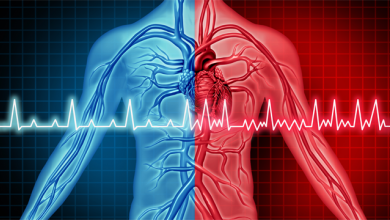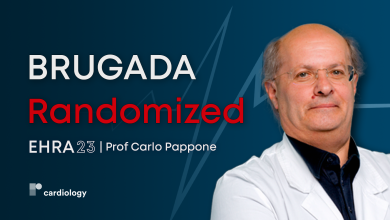Search results
Author(s):
Venkatesh Ravi
,
Jeffrey Winterfield
,
Jackson J Liang
,
et al
Added:
1 year ago
Author(s):
Mario Njeim
,
Frank Bogun
Added:
3 years ago
Percutaneous ablation for ventricular tachycardia (VT) was first attempted in 1983 and has rapidly evolved to become an important option for controlling recurrent VTs.1 Endocardial ablation remained the only percutaneous approach until epicardial access was introduced by Sosa et al. in 1996 and thereafter became progressively more available as an adjunctive strategy for the treatment of…
View more
Author(s):
Carlo Pappone
Added:
1 year ago
EHRA 23 - We are joined onsite by Prof Carlo Pappone (IRCCS Policlinico San Donato, IT) who outlines the key findings of the BRUGADA Randomized trial.
In a randomized controlled trial, 150 patients with Brugada syndrome were enrolled in to develop an evidence-based treatment for the condition. Patients were randomized in a 2:1 fashion to receive either catheter ablation treatment with an ICD, or…
View more
Author(s):
Rohin K Reddy
,
James P Howard
,
Yousif Ahmad
,
et al
Added:
4 months ago
Author(s):
Ramanan Kumareswaran
,
Francis E Marchlinski
Added:
3 years ago
Ventricular tachycardia (VT) is one of the most challenging medical conditions faced by cardiac patients and physicians treating them. Antiarrhythmic medications have limited effectiveness and are frequently poorly tolerated.1–4 Catheter ablation is increasingly used to treat patients successfully.1,5–7 Most VTs can be ablated endocardially but some require epicardial mapping and ablation…
View more
Atrial Fibrosis
Author(s):
Stylianos Tzeis
,
Dimitrios Asvestas
,
Panos Vardas
Added:
3 years ago
Article
Drivers of Atrial Fibrillation
Author(s):
Ian Mann
,
Belinda Sandler
,
Nick WF Linton
,
et al
Added:
3 years ago
Article
Author(s):
Fouad Khalil
,
Konstantinos C Siontis
,
Gabor Bagameri
,
et al
Added:
3 years ago
Catheter-based ablation has been a well-established tool in the treatment of ventricular tachycardia (VT). However, the effectiveness of catheter ablation may be limited by its ability to access sites of arrhythmogenic tissue and achieve adequate lesion size in target areas without risking collateral damage. Antiarrhythmic surgery would be an effective alternative in such situations. Despite the…
View more
Author(s):
Tom Nelson
,
Pankaj Garg
,
Richard H Clayton
,
et al
Added:
3 years ago
Ventricular tachycardia (VT) and VF occur mainly in people with impaired cardiac function and/or ischaemic heart disease, and account for the majority of sudden cardiac deaths worldwide.1 Treatment with anti-arrhythmic drugs such as amiodarone may be at best neutral in terms of mortality and carries significant long-term risks.2,3 While ICDs significantly improve survival for patients with…
View more
Rhythm Interventions Online 2023 - On Demand
Video Series














 « First
« First